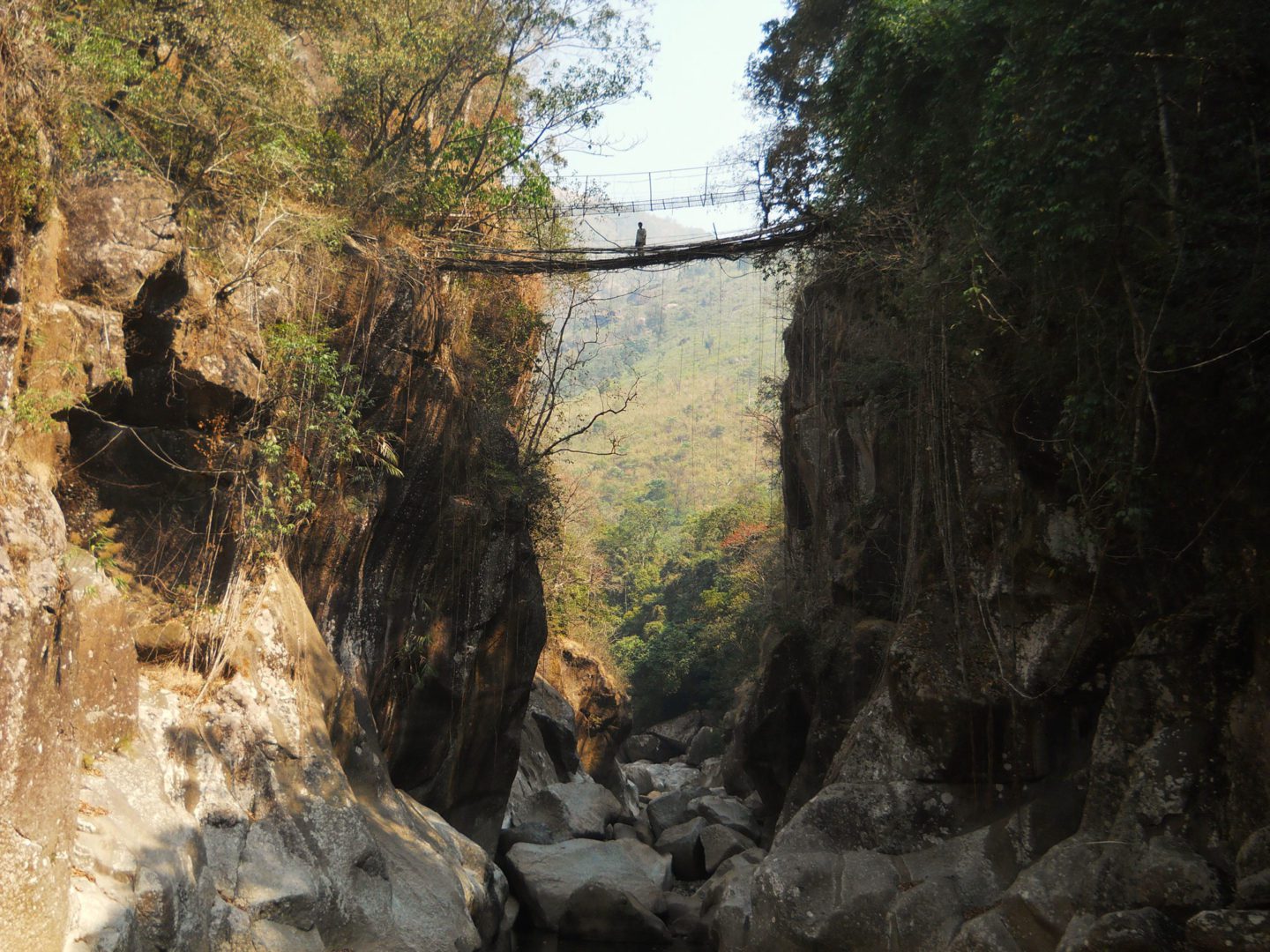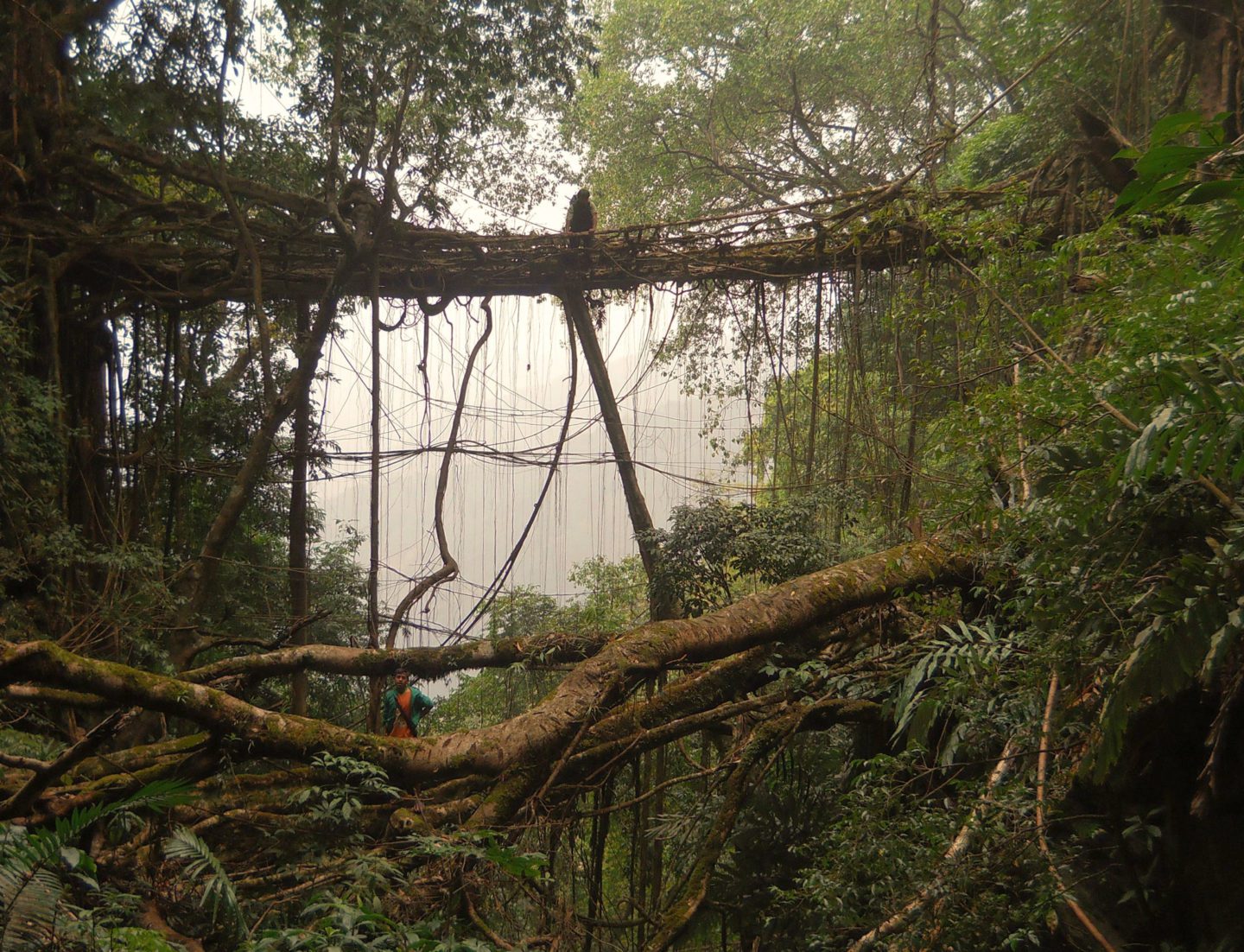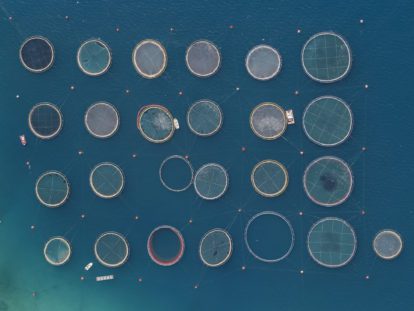In the dense forests of a remote corner of Northeast India, an isolated tribal group have created something remarkable: scores of living bridges, which are grown, not built, from the roots of the ficus elastica species of fig tree. It’s impossible to say how long these plant-based constructions have been around. The people who made them, the War-Khasis, had no written language until the arrival of missionaries in the early 19th century.

Mawshuit living bridge.
Their home, the rugged, rain-swept canyon country of the Khasi Hills, was seldom visited by outsiders until very recently. Yet, some of the living bridges are thought locally to be over 500 years old. The claim can’t be conclusively proven without scientific testing, but one thing is certain: the creation of living architecture in Northeast India goes back further than the region’s written history.
While the idea of structures which essentially grow themselves seems fantastic, I’ve found during my travels in Northeast India that the rationale behind the bridges is surprisingly practical. Before the area was penetrated by roads, most of the building materials the Khasis had access to were found in the jungle. However, the region’s hot, exceptionally moist climate tends to rot wood or bamboo very quickly. Bridges made from these materials simply couldn’t be trusted, so the locals came up with an ingenious solution to the problem: they simply made their bridges out of living organisms, which could be relied upon not to decompose.
The region’s climate tends to rot wood quickly. Locals came up with an ingenious solution: bridges made out of living organisms, which could be relied upon not to decompose.
The way these impressive structures are formed is surprisingly straightforward: a ficus elastica tree is planted beside a river, and its roots are simply pulled into the desired shape. Frequently (though not always), scaffolds are made from Areca Palm trunks or bamboo to support, protect, and nourish the growing roots. Then, the locals wait, sometimes for years, for the roots to become strong enough to walk on. Over time, these structures can grow to be well over a hundred feet long and can suspend travelers close to a hundred feet above the streams they cross. Provided the tree the structure is made from remains healthy, a root bridge will only become stronger over time.

Rangthylliang living bridge.
With the recent introduction of steel and concrete, many root bridges have sadly been torn down, or have fallen into disrepair. Conventional bridges may be more expensive and environmentally unsound, but they are quicker to build. In many areas where root bridges once occurred, they have largely disappeared. Still, the news is not all bad: local Khasis are beginning to take note of the interest being shown in their cultural achievements by conservationists, engineers, and tourists, and have begun to grow new bridges. That said, much more work needs to be done soon if the bridges are to be properly understood and protected.
But not to worry: the Khasis are working on it.
For more information on indigenous living architecture visit The Living Root Bridge Project or download Patrick Rogers’ The Green Unknown: Travels in the Khasi Hills.










